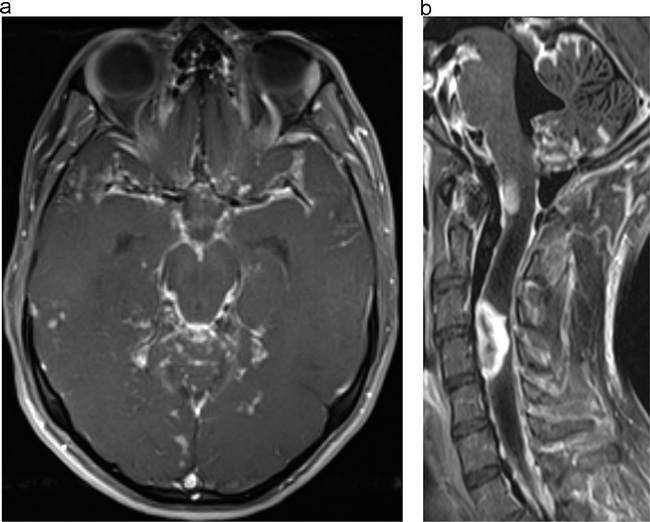Coccidioidal Meningitis


Comments:
Central Nervous System Involvement in Coccidioidomycosis: Patients with systemic coccidioidomycosis may develop CNS involvement in the form of chronic granulomatous meningitis, with limited involvement of contiguous areas of cerebral cortex. Brain parenchymal lesions, when present, are usually multifocal, unlike the solitary lesions produced by intracranial histoplasmosis or blastomycosis. Coccidioidal meningitis can produce complications, including cerebral endarteritis, intracranial mycotic aneurysm, and dural and cerebral venous thrombosis. Microscopically, there are necrotizing granulomas with multinucleated giant cells. The surroundings usually show a neutrophilic response. About this image: MRI (post-contrast axial T1 weighted fat-sat image) from a young male with disseminated coccidioidomycosis and leptomeningeal and spinal cord involvement. The left panel shows extensive leptomeningeal enhancement involving the basilar cisterns, cerebellar folia, and sylvian fissures. The right panel shows nodular leptomeningeal involvement of the cervical spine as well as two large intramedullary enhancing lesions consistent with abscesses. Brainstem and cerebellar leptomeningeal enhancement is also seen. Image source: Bajema KL, Dalesandro MF, Fredricks DN, Ramchandani M. Disseminated coccidioidomycosis presenting with intramedullary spinal cord abscesses: Management challenges. Medical Mycology Case Reports, Mar. 2017, Vol. 15, p. 1-4; used under Creative Commons Attribution-NonCommercial-NoDerivs 4.0 International License.



